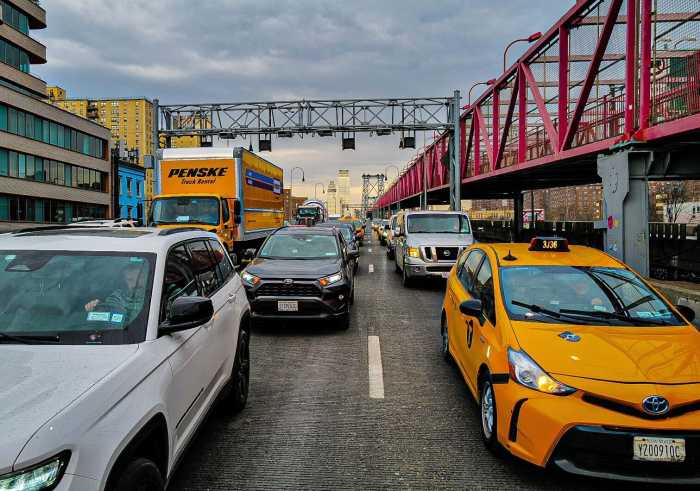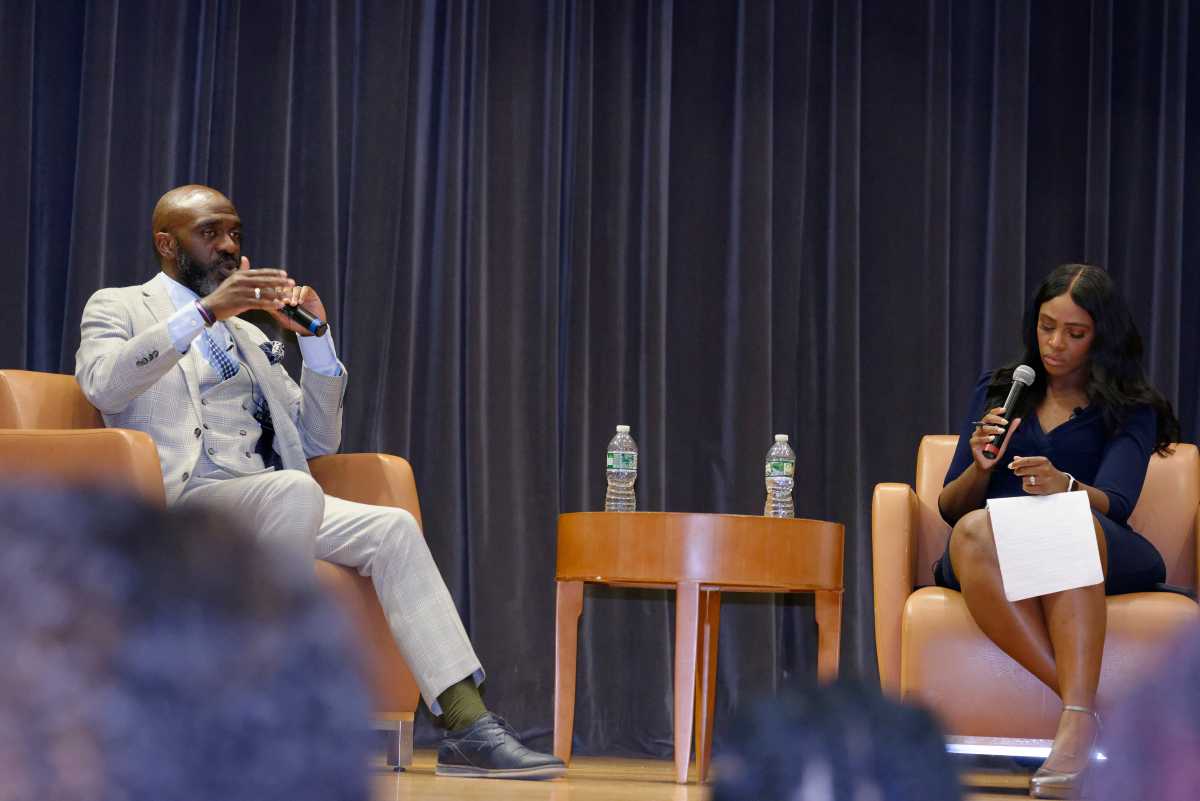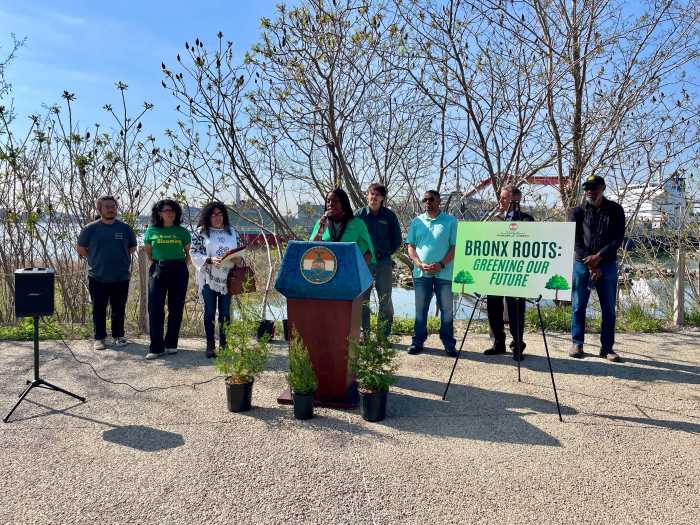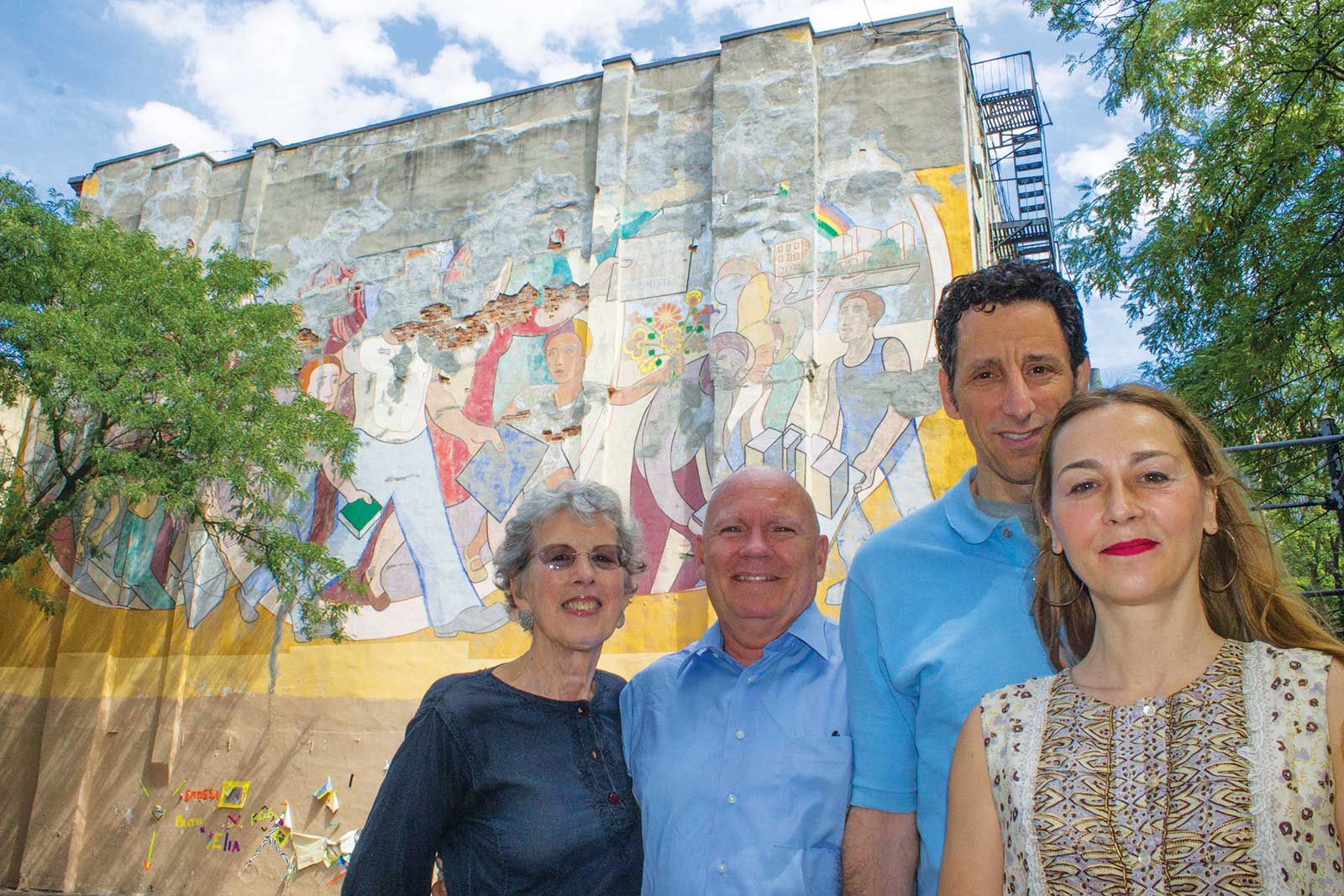
BY ZACH WILLIAMS | Local residents will have to wait about six more months before they can recreate an aging anti-gentrification mural in Hell’s Kitchen.
Two weeks ago, organizers of the effort had hoped to begin repairs to the wall featuring Arnold Belkin’s “Against Domestic Colonialism” which abuts Mathews-Palmer Park (btw. W. 45th & W. 46th Sts., and 9th & 10th Aves.). But just days before scaffolding would rise, the contractor engaged for the project was unable to perform the work for insurance reasons — the latest obstacle for the effort to recreate the 43-year-old mural, which has faced funding and logistical issues in recent years.
However, organizers said that they remain confident in the ultimate success of the effort, which requires that they completely replace the mural because of the deteriorating wall. The scaffolding work requires about six weeks — but with autumn approaching, painting will have to wait, because of the temperature variations of that season, and the subsequent winter.
Extra time, though, allows organizers to continue discussion of lingering issues surrounding the project.
“The biggest challenge for the recreation of [the mural] is the many pieces that are required to act in coordination to promote the success of this monumental project,” said Edward Ward — a project coordinator with Beautify Earth, a nonprofit group supporting the effort.
Some local residents among the approximately 15 people directly involved with the effort told Chelsea Now that there has been dysfunction within the group. One cited, for example, disagreement between local residents who would like the project to begin sooner rather than later, and art industry professionals who are more inclined to emphasize thoroughness.
The extent to which Patricia Quijano — Belkin’s widow and former student — would participate in the project was just one issue of concern listed in a July 31 memo composed by Mark Golden, CEO of Golden Artist Colors, which is involved in the effort. She would offer insight into Belkin’s approach to the mural and owns the intellectual rights to the work, but the on-scene involvement of the Mexico resident would raise costs for the project — which will require about $48,000 just to repair the wall. Previous estimates of additional costs were about $20,000, Chelsea Now reported on June 17.
Communication issues, the intended longevity of the wall, and aesthetic matters of method and materials all require more consideration, according to the memo. But organizers reiterated their commitment to recreating the mural, an effort which stalled at least twice in the last four years.
The pace of progress has evolved from a “sprint” to a “marathon,” said Will Rogers — executive director of the W. 45th St. and W. 46th St. Mural Project, a neighborhood group backing the effort — in a telephone interview.
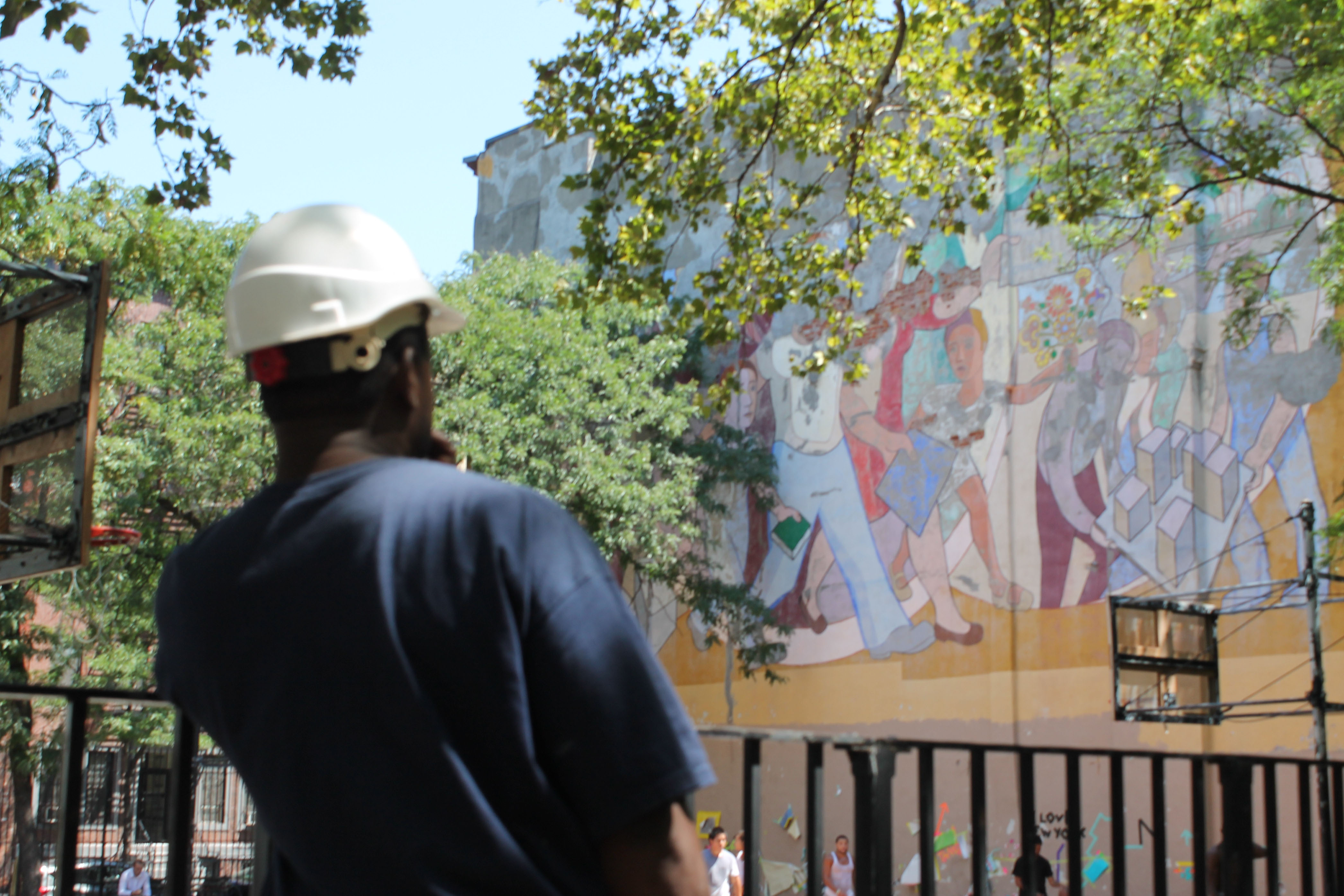
Necessary permits from the city Department of Buildings and the Parks Department have been received, Ward said. An immediate matter concerns the transfer of such permits to a new contractor after the previous one had to leave the project due to “a miscommunication” with involved insurance companies, he added.
Mural artist Denise Penizzotto Gieseke said in an email that the painting will present its own challenges, especially since she will have to recreate the work of another artist. The intent of the repairs is to evoke the original appearance of the wall while ensuring its long-term survival. Recreating Belkin’s work also requires study of his techniques, as well as examination of documents used by the artist, said Rustin Levinson, an art conservator involved with the project, in an email.
Belkin “chose specific colors to evoke mood and imply intentions,” Penizzotto Gieseke noted. The artist created the mural to convey his belief that working class people could band together to confront social and economic blight as well as gentrification, but he was not known as overly “dogmatic” or “stubborn” in his mindset, according to Graciela Kartofel, a West Side resident and art historian who worked with Belkin in the 1980s.
“He could elaborate very well how to help society,” she said on Aug. 11 at the park.
The mural follows a timeline from left to right, with several overt representations of just what type of direction Belkin desired for Hell’s Kitchen. On the viewer’s left, poverty and drug abuse afflict the neighborhood. A more hopeful view emerges when eyes move to the right side. Residents follow the faded slogan: “We the people demand control of our communities” as they seemingly march in triumph to a more assertive and prosperous future.
Organizers repeatedly emphasized that the message of fighting eviction and maintaining control over the destiny of one’s neighborhood remains as relevant in 2015 as it was four decades ago. In both eras, the forces of development threatened to dislodge longtime residents. The project itself evokes a sense of cooperation, according to organizers who said that additional support from local residents would help ensure that their effort could ultimately succeed. Ward said those interested in contributing to the project — financially or otherwise — should contact him at edward@beautifyearth.org.
Allison Tupper, vice president of the W. 46 Block Association and an organizer with the mural project, said in a telephone interview that while there have been delays, there are not “obstacles” to its ultimate completion at this point so much as “a process that has to be worked out.”
Enthusiasm among organizers remains higher than ever, she added.
“The timing is still up in the air. There is no doubt about it. But the neighborhood really does want this mural. We have been trying off and on for years, and we are now very hopeful,” Tupper said.




